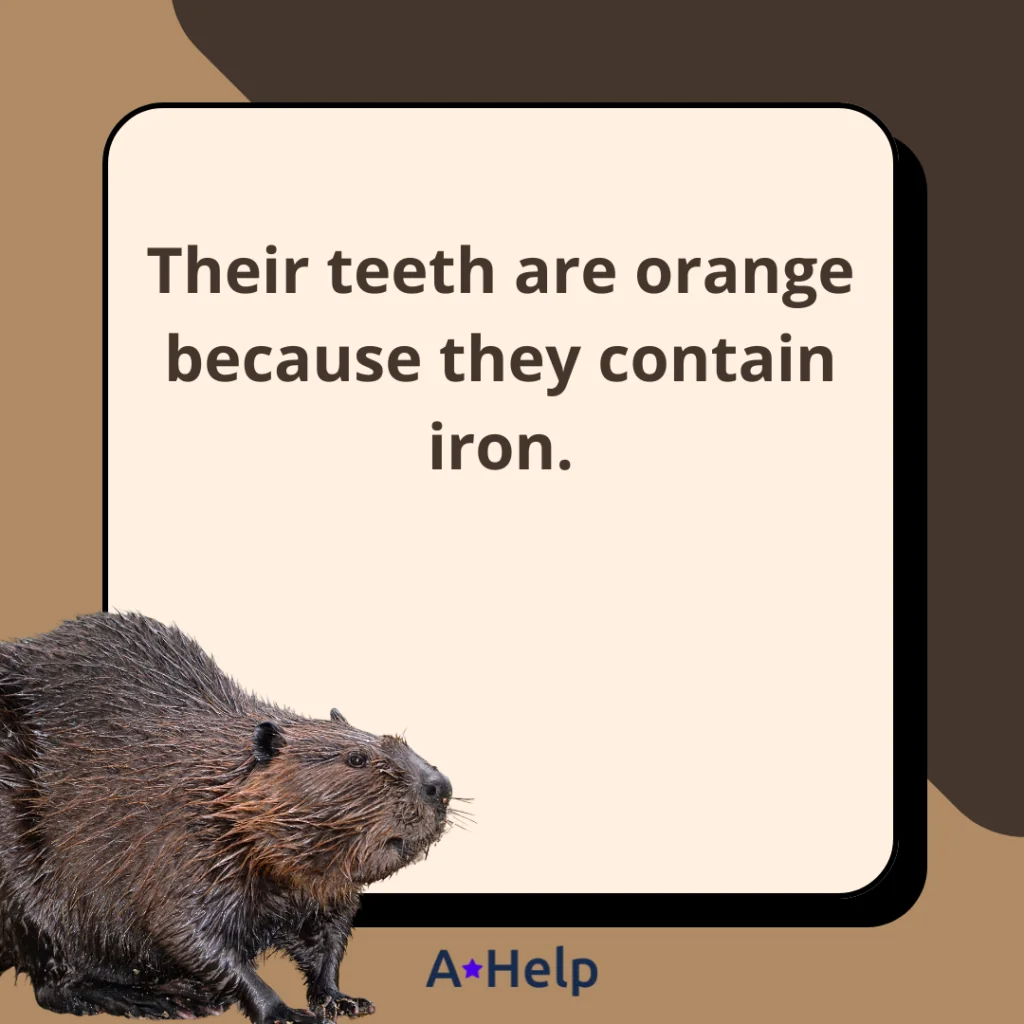☝️ TLDR: Beavers’ teeth are coated by pigmented enamel that is composed mostly of hydroxyapatite crystals, but also contains iron
Ever wondered why beaver teeth have that unusual orange color? Well, you’re not alone! Let’s sink our own teeth into some fun beaver teeth facts to understand why these lil guys grow such impressive dental equipment!

✅ AI Essay Writer ✅ AI Detector ✅ Plagchecker ✅ Paraphraser
✅ Summarizer ✅ Citation Generator

Beavers have evolved to be nature’s engineers, flooding streams with makeshift dams to build lodges for survival. They developed big skulls with powerful chewing muscles and around 20 additional teeth to make it easier. Their teeth, of course, are tough enough to cut through wood and hard plant material the dams are constructed with.

The distinct color of beaver teeth is due to iron compound pockets — like ferrihydrite, a widespread mineral on the Earth’s surface — present in the enamel, which makes them incredibly durable. The enamel’s outer layer is composed of an organic matrix of “nanowires” and inorganic minerals.

One of the most interesting beaver teeth facts is that their teeth never stop growing! To keep them at the right length, beavers must constantly gnaw on trees, which also sharpens their chompers. The beaver teeth iron strengthens the front surface of the incisors so that the backs are worn down quicker, creating a cutting edge. It’s so effective, that beavers are known to chew through cable lines, causing Internet and cellphone outages!
📌 Fun Fact: This Factoid Might Soon Be Debunked?!
An international team of scientists investigated the teeth of 7 different rodent species using atomic-scale imaging and nanoscale spectroscopies and published their findings in April 2024. The research shows that the orange color of rodents’ teeth might not come from the ferrihydrite-filled pockets in the enamel. The team hypothesizes it might come from aromatic amino acids in the organic matrix of the enamel, instead.

Certain gnawers on this planet are hungry for way more than just some birch flesh, so beware!
| 🦫Animal | 🫦Bite Force | 💢Example of What They Can Bite Through |
| Great White Shark | ~4,000 psi | Capable of biting through steel cages and whale bones. |
| Saltwater Crocodile | ~3,700 psi | Can crush bones, turtles, and large prey like buffalo. |
| Hippopotamus | ~1,800 psi | Can snap a canoe in half or crush a lion’s skull. |
| Jaguar | ~1,500 psi | Can bite through the skulls of prey or crush turtle shells. |
| Gorilla | ~1,300 psi | Strong enough to crack nuts or tear through tough plants. |
| Polar Bear | ~1,200 psi | Can bite through thick ice and the bones of seals. |
| Spotted Hyena | ~1,100 psi | Known for biting through bone to access marrow. |
| Tiger | ~1,050 psi | Can pierce through the hides and bones of large prey. |
| Grizzly Bear | ~975 psi | Can bite through thick tree trunks and bones. |
| Lion | ~650 psi | Capable of breaking bones and tearing through tough flesh. |
Source
FAQ
Follow us on Reddit for more insights and updates.





Comments (0)
Welcome to A*Help comments!
We’re all about debate and discussion at A*Help.
We value the diverse opinions of users, so you may find points of view that you don’t agree with. And that’s cool. However, there are certain things we’re not OK with: attempts to manipulate our data in any way, for example, or the posting of discriminative, offensive, hateful, or disparaging material.